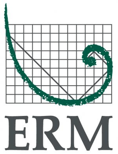Reporting approach
As required by the Global Reporting Initiative (GRI) Standards, we provide a summary of how we developed this report as well as indexes to help readers locate specific information about our policies, programs and performance.
The intent of these reporting elements is to provide a level of comfort among our stakeholders that the information we report is timely, accurate, reliable and complete.
This report has been prepared in accordance with the GRI Standards: Core option. As a GRI Standards Pioneer, we are among the first to adopt the new GRI Standards: global best practice for sustainability reporting. In doing so, we are demonstrating our full support for GRI's mission to empower decision-makers everywhere, through its sustainability standards and multi-stakeholder network, to take action towards a more sustainable economy and world.
About our report
This report details our performance during fiscal year (FY) 2018 (1 April 2017 through 31 March 2018) in managing key issues and targets identified through our materiality assessment, and it is reviewed and approved formally by our Executive Committee. Our previous report (covering FY17) was issued in July 2017.
The key elements that we focused on in developing this report include:
- Engagement with stakeholders: This report responds to feedback from our stakeholders, which helped inform our materiality assessment and the report content.
- Sustainability context and value chain: We explain how we see the role of ERM in wider sustainability issues, the impact we have through our client work and own operations, and the role that our experts play in professional associations, industry forums and other thought leadership activities to address important issues raised by our stakeholders.
- Materiality: We identify and describe the material topics that are important to our stakeholders and the business, and set out our associated performance for the reporting year as well as key performance indicators (KPIs) and targets for the coming year and beyond.
Principles for defining reporting quality
The GRI Standards set out principles for defining reporting quality, and we have taken a number of actions to meet these principles:
- We safeguard the quality of information contained in this report through a robust assurance process leveraging internal and external expertise; and
- We continue to improve the availability of timely information to internal leaders in order to inform decision-making and drive performance.
Determining what to include in this report begins with an understanding of our impacts throughout our value chain, which include our associations with business partners, our work undertaken for clients and our thought leadership activities. This report addresses those items that are of significant interest to our stakeholders and to ERM's business strategy.
Each year, we conduct a materiality assessment in order for our business planning to include initiatives to respond to the key topics identified. We establish KPIs and targets to track the effectiveness of our management of these issues throughout the year. Our focus is on improving, year on year, the management of key sustainability issues for the business.
Photography
Our thanks to the many talented ERM employees who contributed photography for our Sustainability Report. Their names are included in photo captions throughout this report. We also thank our colleagues who provided the banner images:
|
Rebecca Chan |
Kirsten Seymour |
Jane Barnett |
Naushad Tahsildar |
|
Ian Hamilton |
Josh Calkin |
Andrew Gregory |
Daniel Casanova |
|
Vincent Lecat |
Paul Wijnja |
Photo provided by Hugo Cusak |
Photo provided by Retail Design |
|
Mike Everett |
Yiqun Zhang |
Photo provided by Leping Social |
John Cima |
|
Eileen Pagan |
Photo provided by |
Ben Pizii |
Annie Surratt |
|
Rahul Srivastava |
Juan Navarro |
Lindsey Bungartz |
Kassi Murray |
|
Lindsey Bungartz |

























